20 Incredible Facts About Meteora Monasteries, Greece
Have you heard about the levitating Meteora Monasteries in Greece?
Imagine monolith rock formations, rising hundreds of feet from the ground, withstanding nature’s forces for millions of years. Then, picture Christian Orthodox monasteries, balanced on top of the rocks, defying the laws of gravity.
This mystical, surreal place is Meteora, and its name roughly translates to “levitating between Heaven and Earth”.
Intrigued? In this article, I’ll share with you the most fascinating 20 facts about Meteora Monasteries that I learned during my visits to Greece.
Ready to explore?
Keep reading!
Disclaimer: This post contains affiliate links. If you purchase something through one of them, I may receive a small commission at no extra cost to you. Thank you for helping me create free content on this website!
Inspiring Historical Facts About Meteora Monasteries, Greece
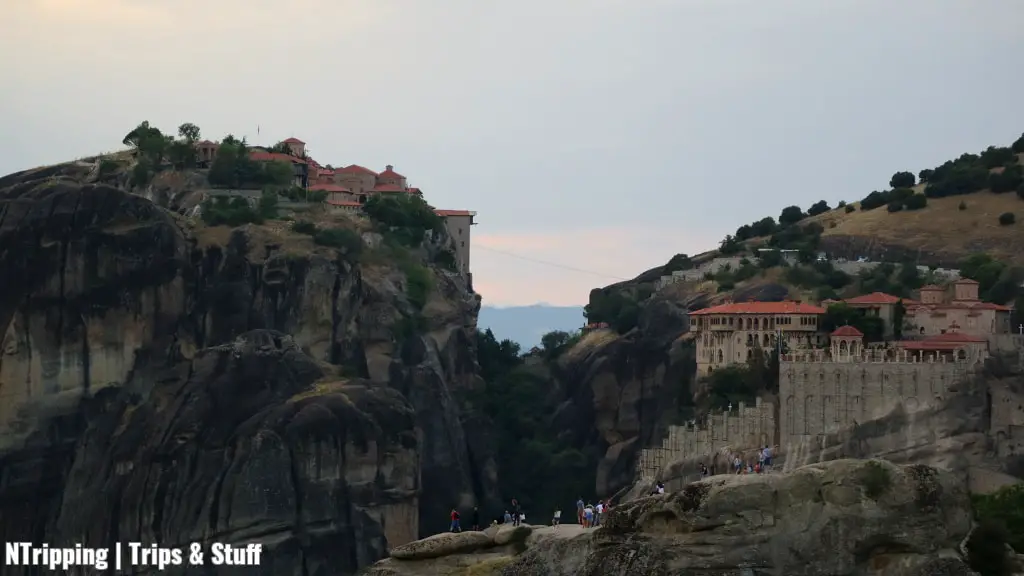
In this section, I’ll tell you the most significant historical facts about the Meteora Monasteries. The monasteries have played an important role in Greek history and culture since their establishment, serving as bastions of faith during centuries of occupation.
- Meteora Monasteries date back to the 14th century. The first people to inhabit Meteora, Greece, were hermit monks. In the 11th century, they came from Mount Athos to seek peace and solitude. At first, they lived in caverns and rock-hewn dwellings. The earliest monasteries were built in the 14th century. Monks and nuns congregated to study the dogmatics of East Orthodox Christianity.
- The monasteries survived numerous attacks. Meteora Monasteries played a significant role in preserving Greek culture and history during periods of occupation. Due to their strategic location, they were used as safe havens at times of political unrest and invasions. Heavily bombed and partially destroyed during WWII, they survived even modern warfare. After the end of the war, the monasteries were rebuilt and some even expanded.
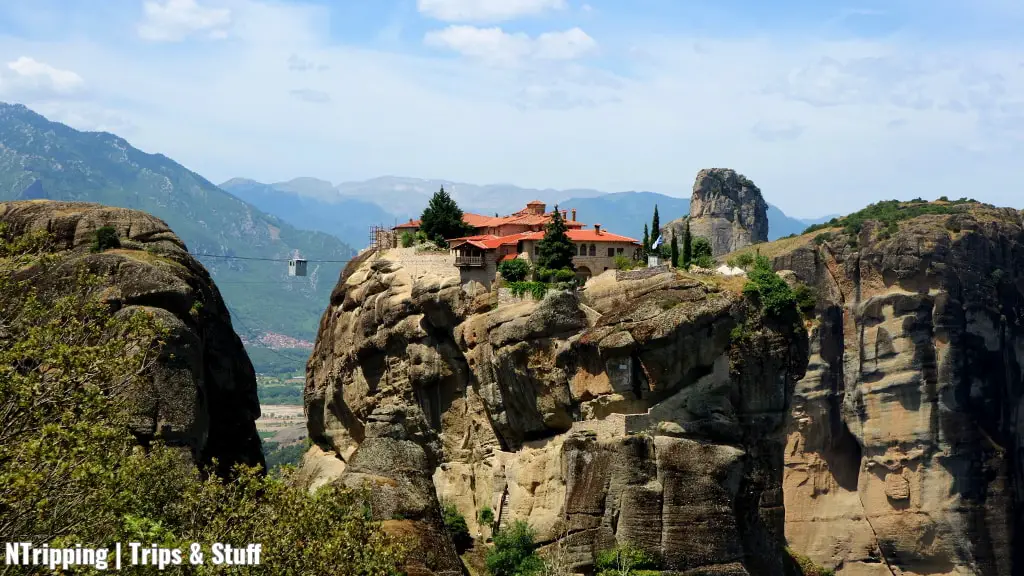
- Out of the original 24 Meteora Monasteries, only six remain active today. You can still see the ruins of several others on the adjacent cliffs. Nuns inhabit two of the functioning monasteries: St. Stephen and St. Barbara (aka Roussanou). The other four – The Great Meteoron, Varlaam, The Monastery of the Holy Trinity, and St. Nicholas Anapafsas – are home to monks. The total monastic population currently counts 67, comprising 17 monks and 50 nuns.
- The six functioning Meteora Monasteries are a UNESCO World Heritage site. Recognized in 1988, the active Meteora Monasteries are open to visitors. You can also still see the ruins of the other 18 deserted monasteries. Remains of the monks’ rock-hewn dwellings can be observed on several Meteora cliffs.
- The monastery complex is the second largest in Greece. Meteora Monasteries are inferior only to the legendary Mount Athos on the Chalkidiki Peninsula. They are built in a similar architectural style, called Athonite. The monasteries resemble medieval towns. Defensive walls surround the buildings and leave a spacious open area with stunning views.
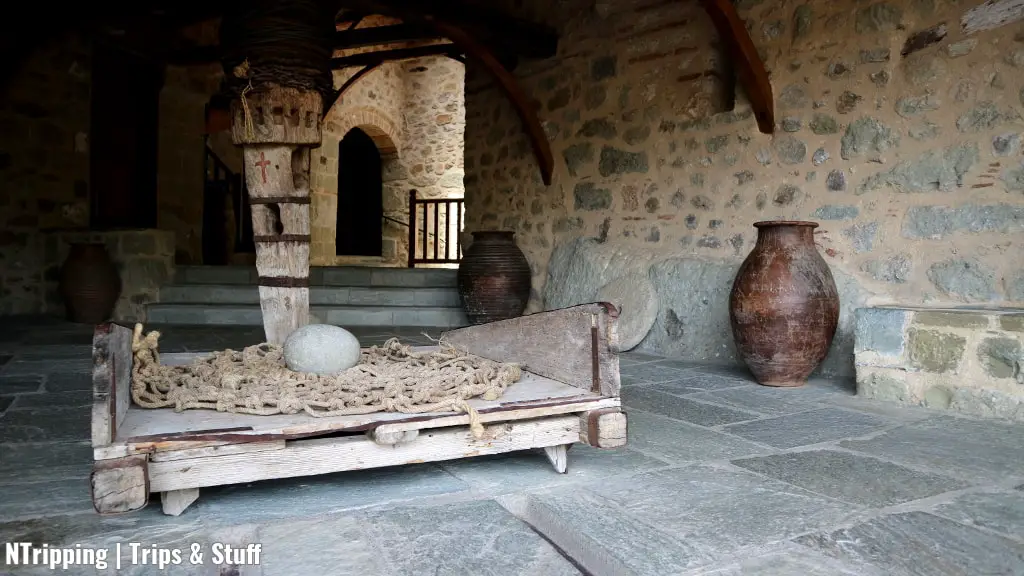
- The access to the monasteries was restricted to removable ladders, ropes, and winches. Whenever the monks and nuns felt threatened, they would remove the ladders and deny access to the outside world. The ropes would be changed “when God decided it was time to replace them”. Meaning, whenever they would tear. Surprisingly, some of the installations are still in use.
- Nowadays, visitors climb stairs carved into the rocks to access the monasteries. In the 1920s, the government carved staircases and constructed bridges, paved paths, and tunnels, making access to the remaining monasteries much easier. The steep ascent is difficult but the panoramic views of the surrounding landscapes are worth the effort.
Mind-Blowing Facts About the Meteora Rock Formations
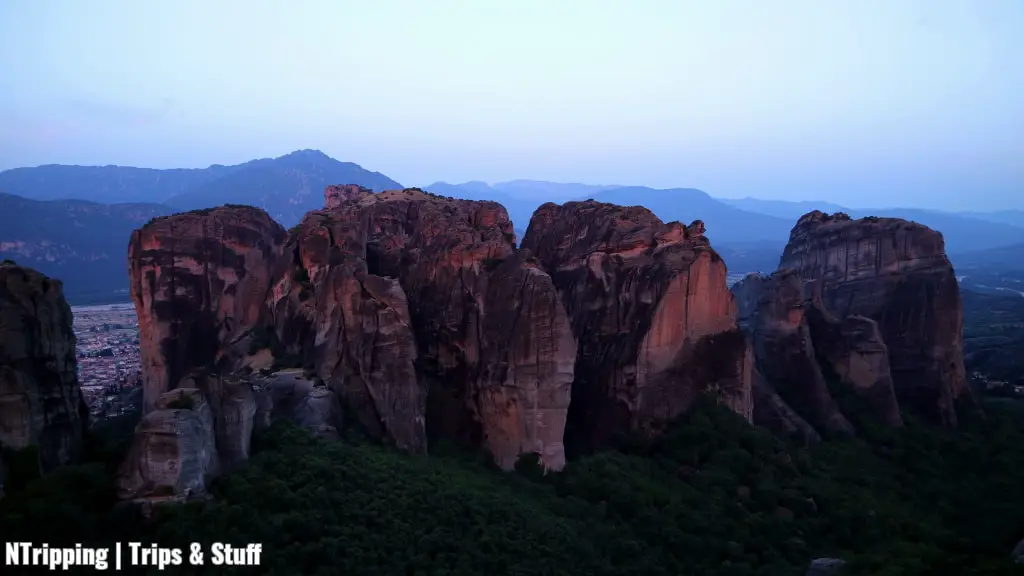
From the rocks’ formation to the number of steps you need to climb to the monasteries, here are the most surprising facts about the Meteora Rocks. Let’s explore!
- Meteora Monasteries are perched atop towering rock formations in central Greece. Meteora Rocks stand in groups of smaller and larger pillars, resembling a majestic stone forest. The height of the monoliths varies. On average, they range from 390 m / 1,280 ft. to 630 m / 2,067 ft. above sea level. To put this into perspective, some are as tall as a house, while others make skyscrapers look like dwarfs.
- The name “Meteora” translates to “suspended” or “levitating”. The thick, lush forest that grows between the rocks, hides their bases. This creates a mind-boggling illusion. The monoliths look as if they are suspended or levitating in the air. This is one of the most incredible facts about Meteora.
- The Meteora Rocks have witnessed millions of years of geological history. The huge rounded boulders rise near Kalambaka, Greece. The monoliths are mainly composed of sandstone and conglomerate. Sedimentation and tectonic activity created them. Rain and wind carved the huge pillars into their current, breathtaking shapes.
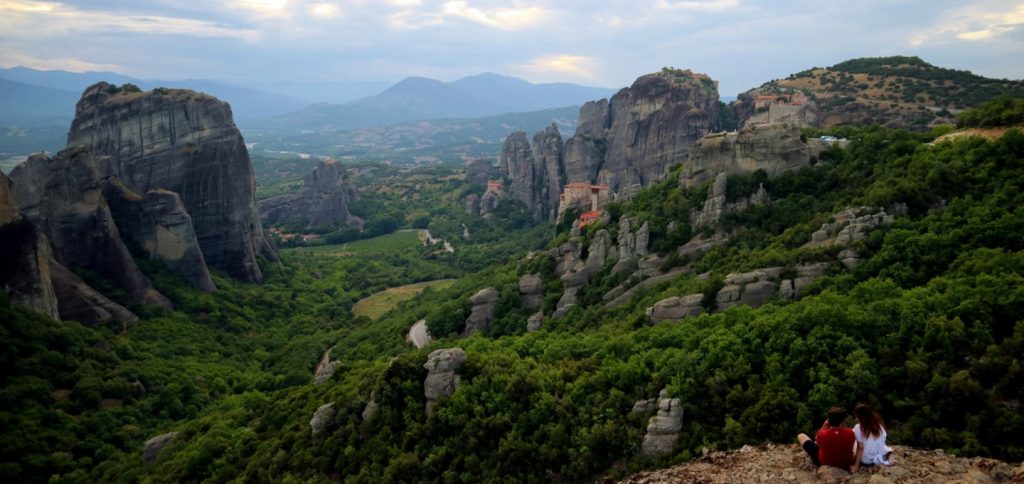
- Steep paths and hundreds of steps lead to the top of the Meteora Rocks. If you want to visit Meteora Monasteries and enjoy breathtaking panoramas, be ready for a difficult ascent. You’ll need to climb 270 stairs to reach the Great Meteoron, 150 steps to the Varlaam Monastery, and 200 stairs to the Roussanou Nunnery. The Monastery of the Holy Trinity requires you to climb 140 steps after a long walk from the road. St. Nicholas Anapafsas Monastery is reached after an extremely steep path and countless stairs. Only St. Stephen Monastery doesn’t torture you with any climbing.
- Many rocks in Meteora have a name. This simplifies navigation for locals and visitors alike. The most famous formations include Marmaro (“marble”), Modi, Alysos, Pyxari, Ambaria, Agia, and The Holy Spirit Rock. That’s one Meteora fact few visitors uncover.
- The infrastructure at Meteora is quite impressive. A modern 10-km / 6.2-mi long, scenic road will help you reach the Meteora Monasteries. Viewpoints reveal unbelievable vistas. Take your time to stop and admire the panorama from multiple vintage points. Additionally, Meteora has an extensive network of hiking trails.
Fun and Interesting Facts About Meteora Monasteries
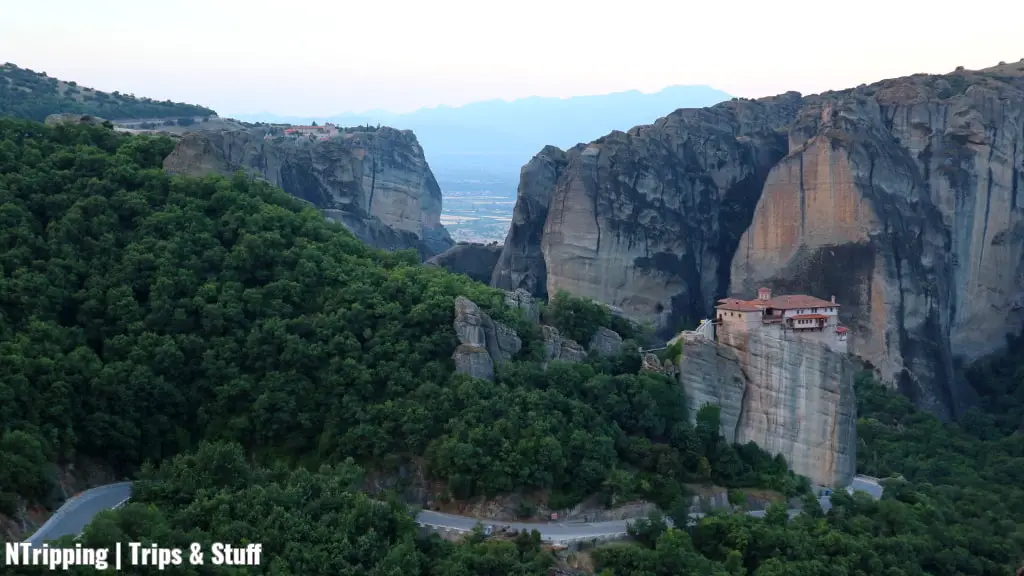
Now we’re getting to the most exciting stuff. In this section, you’ll find the most interesting and fun facts about the Meteora Monasteries. Let’s discover in detail what treasures each complex keeps and what makes them unique.
- Monks and nuns in the Meteora Monasteries lead a self-sufficient life. Manual labor is part of the monastic daily routine. The monks and nuns grow their food and produce wine and olive oil. An important source of income is the donations. Tourists and pilgrims donate money and goods to help the monks and nuns at Meteora sustain their modest lifestyle.
- The Great Meteoron Monastery is the oldest and largest of the Meteora Monasteries. St. Athanasios founded the monastery, also known as the Metamorfossis Sotiros Monastery (“Transfiguration of Christ Monastery”), in the 14th century. Despite its imposing size, only three monks currently live in the Great Meteoron. The monastery occupies Broad Rock and rises higher than the rest of the monasteries, resembling a commander watching over his troops.
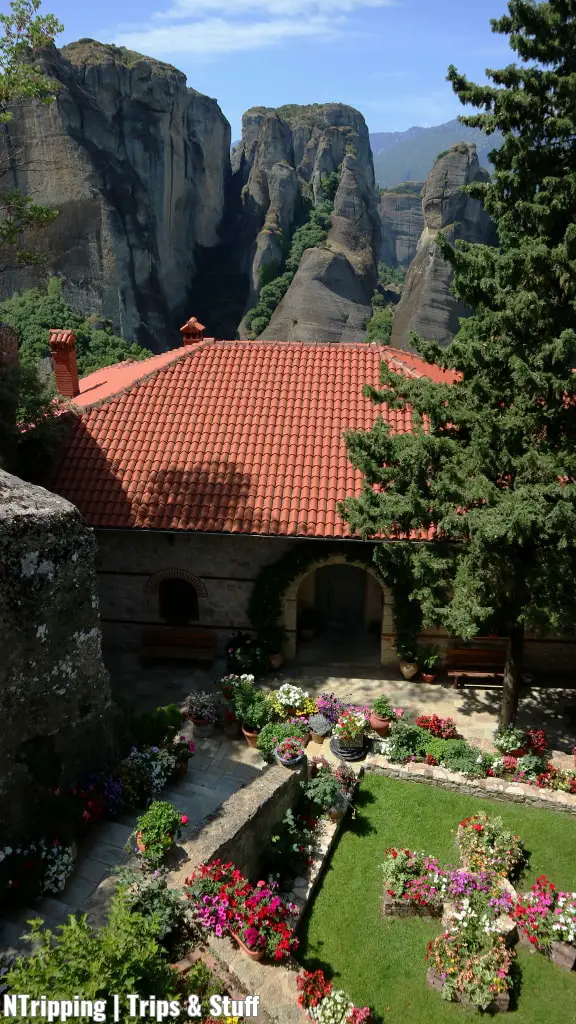
- The Varlaam Monastery is the most populated of the male monasteries, with seven monk residents. The second largest Meteora Monastery offers jaw-dropping views of Meteora and an invaluable insight into the life of the monks. The monastery is named after the first monk who lived on this cliff in the 14th century, Varlaam. The actual monastery was erected two centuries later. From its stunning courtyard, you can marvel at all functioning Meteora Monasteries except St. Stephen. You can also spot the remains of several of the ruined monasteries.
- The Roussanou Nunnery is arguably the most gorgeous of the Meteora Monasteries. Thankfully, its small size prevents large groups from visiting it. The monastery is also known as St. Barbara Monastery, named after the first nun who resided there. Nowadays, 13 sisters live in the nunnery. It was the first of the Meteora Monasteries I ever visited and probably that’s the reason I loved it so much!
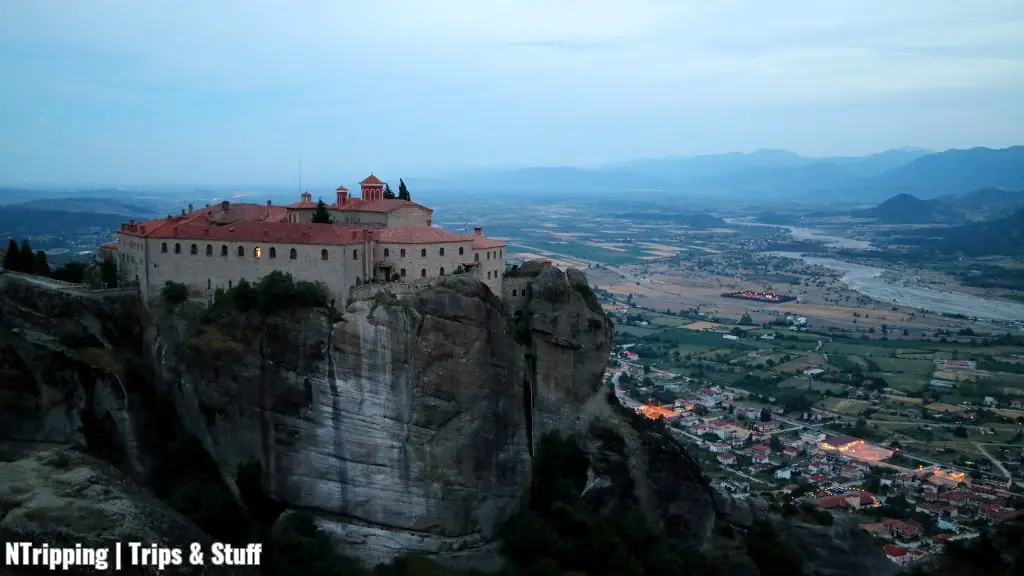
- St. Stephen Monastery is the most accessible and most populated Meteora Monastery. 28 nuns live in the nunnery. There are no steps to climb. All it takes to enter the impressive structure is crossing a bridge. Hidden a little further away from the rest, it’s hardly visible from the other Meteora Monasteries, but you can see it from the town center of Kalambaka.
- St. Nicholas Anapafsas is the tiniest and coziest of the Meteora Monasteries. It’s also the hardest to reach. An extremely steep path, alternating with even steeper stairs, leads to the smallest and least visited but unique and surprisingly welcoming of the Meteora Monasteries. It’s located closest to Kalambaka and Kastraki. Often overlooked on the way to its bigger neighbors, St. Nicholas Anapafsas Monastery is a true oasis of solitude and tranquillity.
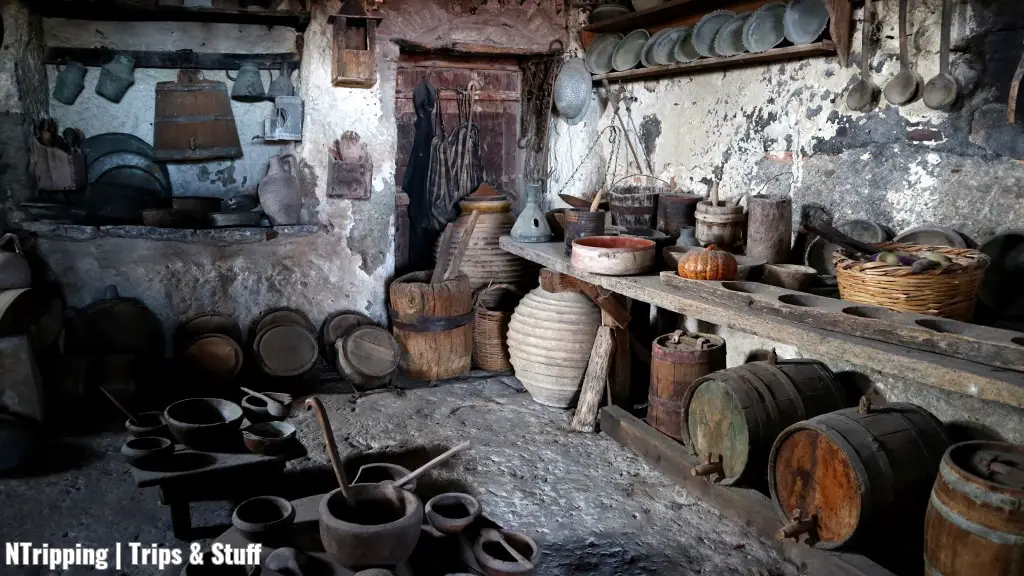
- Inside the Great Meteoron, you can find countless artifacts. For example, the church is covered in East Orthodox frescos from the 16th century. The History Museum boasts religious icons, historical codices, and military uniforms. In the monastery’s old kitchen, you can observe the original oven, sink, and utensils. In a tiny corner behind a wooden door with a small window, a spooky display shows the skulls and bones of monks, who have inhabited the Great Meteoron Monastery since its inception in the 14th century. And the former nursing home and hospital host an exhibition of priceless manuscripts and lithographies.
FAQs About the Meteora Monasteries, Greece
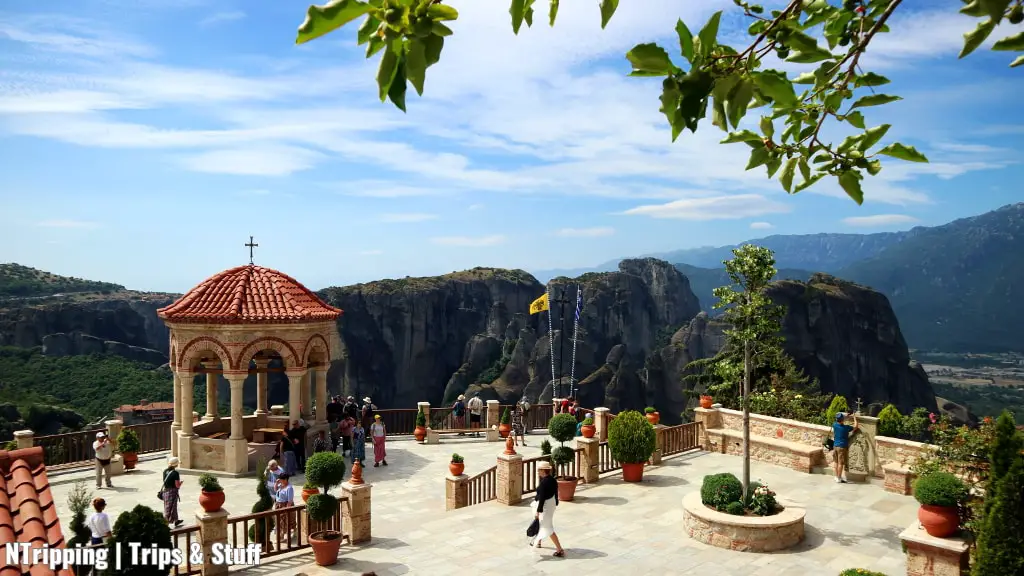
Why is Meteora so famous?
The monolith Meteora rock formations rise hundreds of feet from the ground, withstanding the forces of nature for millions of years. On top of them, in the 14th century, monks built the East-Orthodox Meteora Monasteries. The structures defy the laws of gravity and look like they’re levitating in the air.
Is Meteora Greece worth visiting?
Definitely yes! Meteora, Greece will leave you speechless with its staggering rock formations and gravity-defying monasteries. Apart from visiting the Meteora Monasteries and photographing the monoliths at sunrise and sunset, you can walk, hike, paraglide, and rock-climb in the region. Even if you can only go on a day trip from Athens to Meteora, do it!
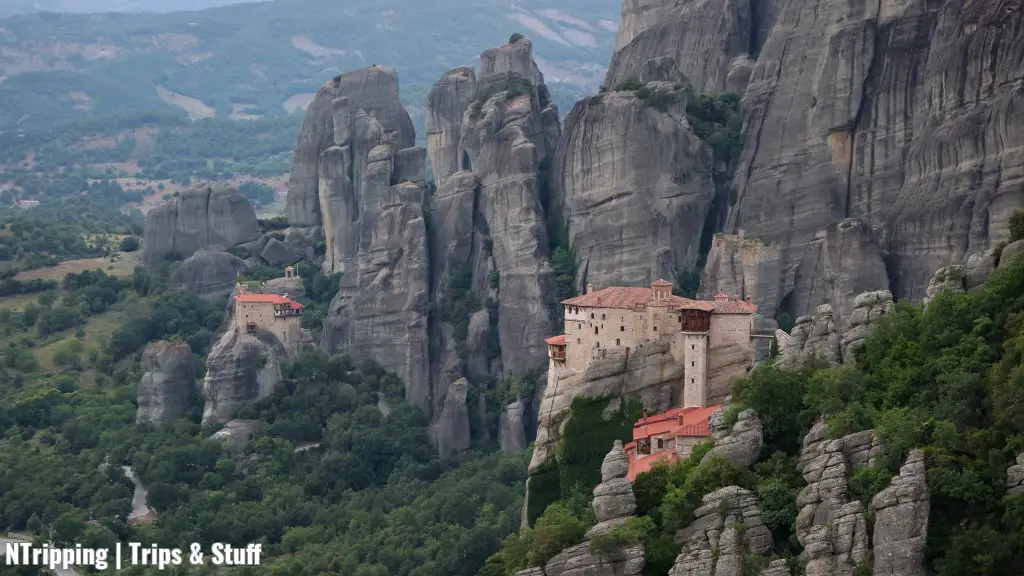
What are the Meteora Monasteries famous for?
The levitating Meteora Monasteries are famous for their mind-boggling location on top of the Meteora Rocks. The East Orthodox religious sites keep countless artifacts and tell a million stories about resilience and human ingenuity.
Do monks still live in Meteora, Greece?
Only 6 of the original 24 Meteora Monasteries are still functioning today. Nuns inhabit two of them, St. Stephen and St. Barbara (aka Roussanou). Monks live in the other four, The Great Meteoron, Varlaam, The Monastery of the Holy Trinity, and St. Nicholas Anapafsas. The total monastic population currently counts 67, comprising 17 monks and 50 nuns.
How Many Facts About Meteora Monasteries, Greece Did You Already Know?
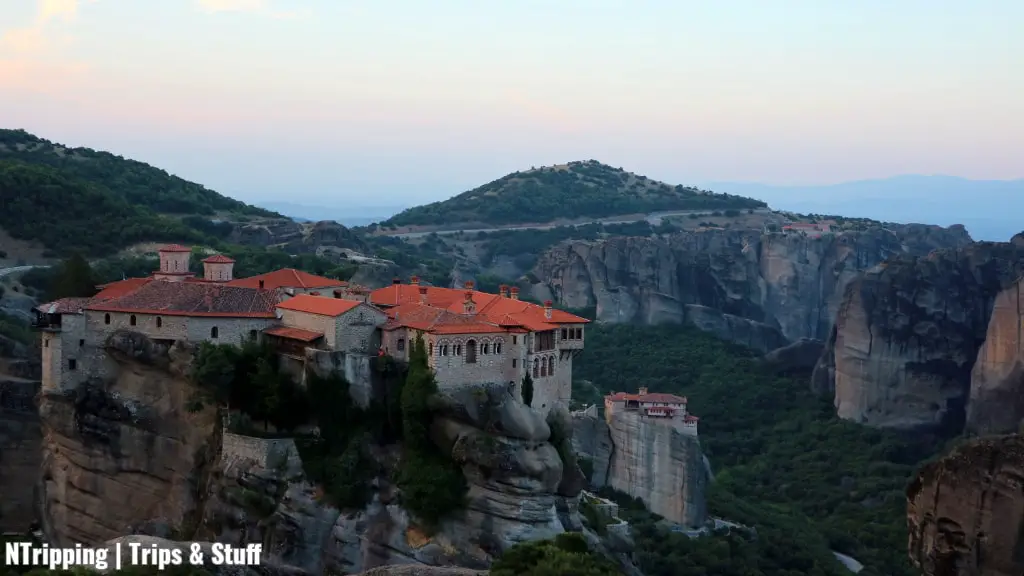
And there you have it – the most fascinating facts about Meteora Monasteries, Greece.
Withstanding millions of years of harsh weather and centuries of warfare, this majestic place will blow your mind. It’s difficult to grasp how monks erected such transcendent structures at this impressive height without the help of modern tools. And how they manage to lead their modest life of solitude despite the countless visitors of Meteora every year.
Now, it’s your turn:
What facts about Meteora Monasteries surprised you the most?
Share in the comments below!

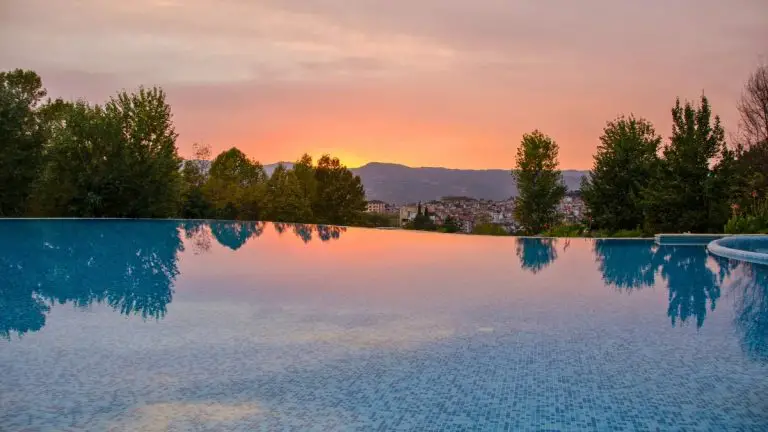
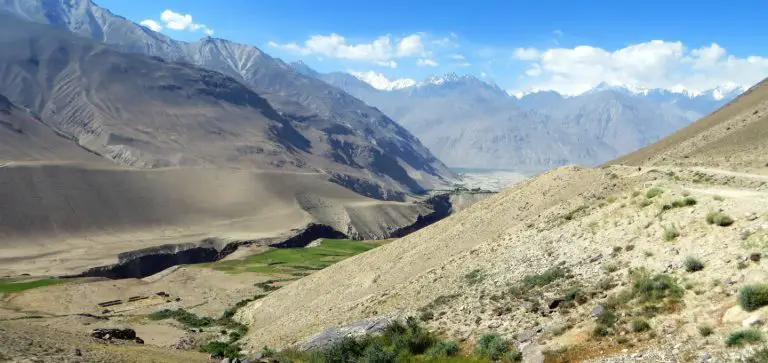

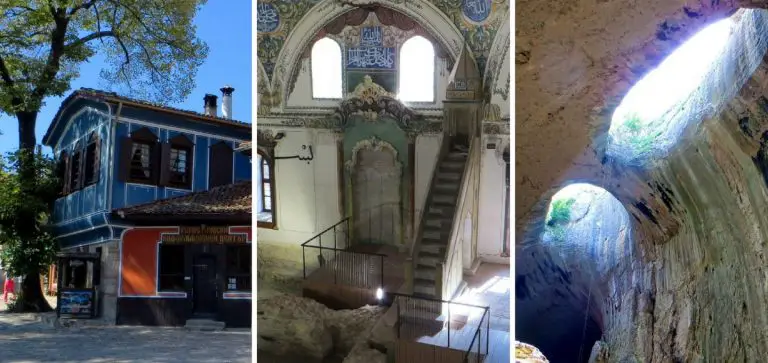
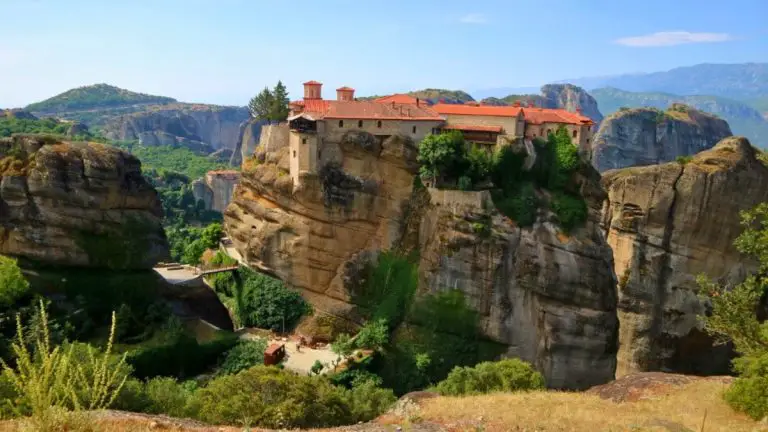
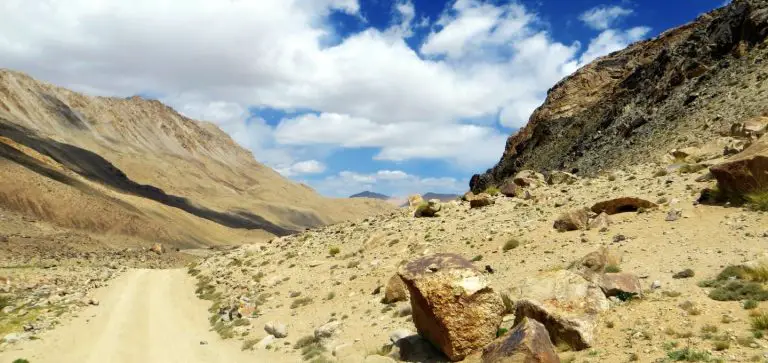
Hi Ms. N. Im really fascinated with UNESCO World Heritage sites. And Meteora Monasteries is one of the best.
Hey Agness,
you’re spot on – Meteora Monasteries are undoubtedly one of the best UNESCO World Heritage Sites!
Cheers and happy travels!
N.